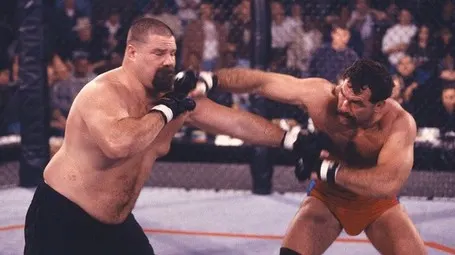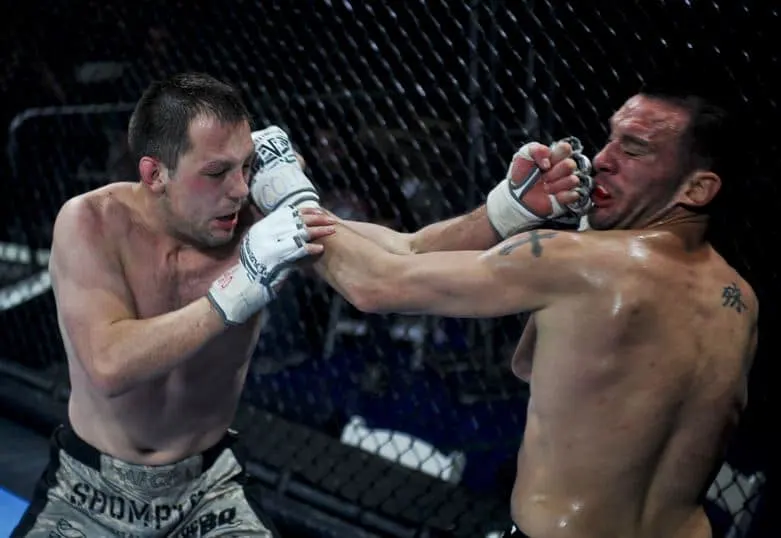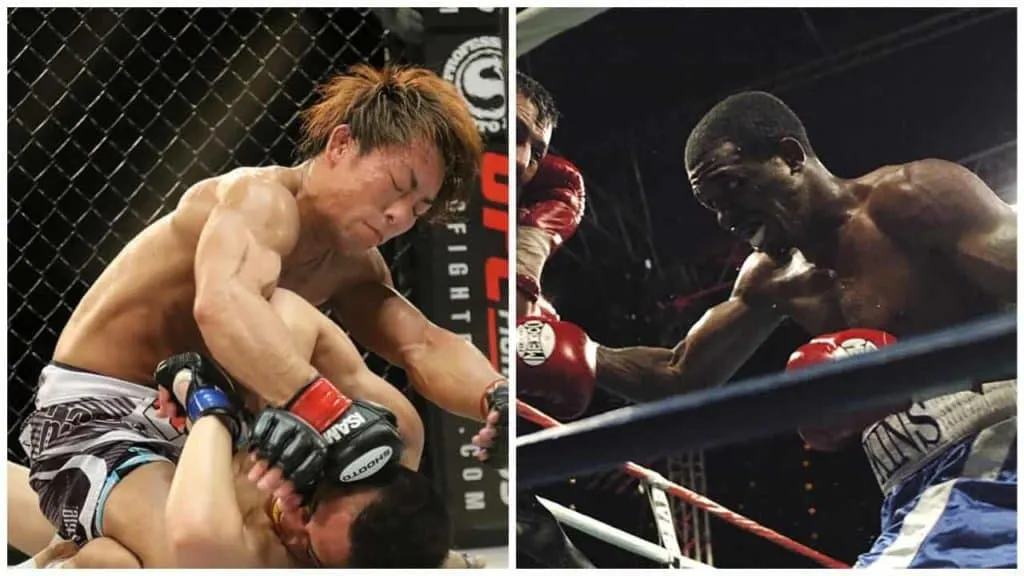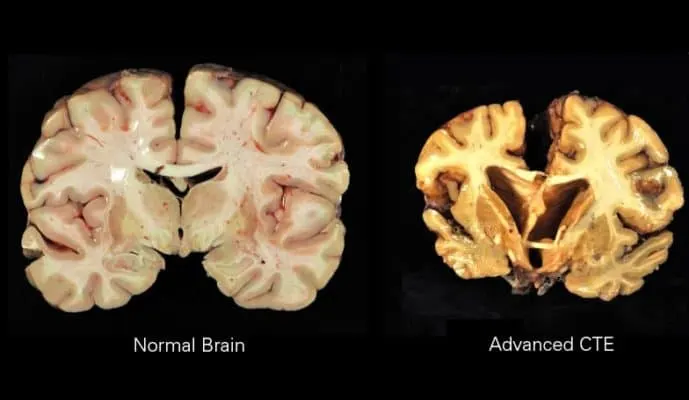
Disclaimer: The contents of this website, such as text, graphics, images and other material are intended for informational and educational purposes only and not for the purpose of rendering medical advice. The contents of this website are not intended to substitute for professional medical advice, diagnosis or treatment.
Over the last several decades, an increasingly long list of combat sports has grown in popularity thanks to the explosive growth of UFC and MMA. However, seeing some of the ferocious talent and capability that these combatants have when facing off against each other raises the question of how often those blows to the head and face result in severe neurological damage.
Studies have shown that MMA fighters are at a higher risk of suffering brain damage. This risk goes up the longer an MMA fighter’s career goes on, and researchers have determined that some regions of the brain, in particular, suffer significant degradation.
Despite these dangers, there is no shortage of combatants ready to face off against each other in the ring. As such, it is vital for existing and aspiring MMA fighters to be aware of the risks involved with this sport and how they can mitigate and overcome them.
What Percentage of MMA Fighters Get Brain Damage?
While finding exact numbers regarding the percentage of brain injuries among MMA fighters is challenging due to the inherent difficulty of recording this data, a 2018 study determined that approximately 23.6% of MMA fighters suffered from a brain injury.
If one in four MMA fighters is suffering brain damage from their matches, many might believe that the risks presented by the sport are too high to engage in competitions. However, the challenge is that evaluating brain injury is not an exact science, and there is a lot of room for uncertainty and error.
The study mentioned above examined five years of records from 2010 to 2015 for amateur and professional MMA fighters. While the 23.6% statistic yielded is accurate based on the details of the review, it fails to take into account the long-term effects of fighting in the MMA ring.

Another study conducted in 2013 determined that the longer a fighter’s career lasts, the more likely they are to suffer reduced connectivity between the basal ganglia, and other regions of the brain. However, even in this instance, the study was published as an abstract. The data and conclusions brought to light by it are only considered preliminary until a peer-reviewed journal publishes them.
Ultimately, this means that while the studies conducted towards brain injuries in MMA fighters show notable signs of long-term neurological damage, there must be further studies in this field to yield meaningful scientific data.
Has Anyone Died in an MMA Fight?
As of April 2019, there have been seven recorded deaths from sanctioned contests and an additional nine deaths from unregulated bouts. However, none of these deaths have occurred in the UFC, despite being the largest MMA promotional event. Due to the inherent risks associated with unsanctioned events, this article will focus only on the fatalities in sanctioned events.
Sam Vasquez
35-year-old Sam Vasquez competed at an event called the Renegades Extreme in Houston, Texas, on October 20, 2007. He lost the fight through knockout in the third round and lost consciousness again shortly after the bout. When taken to the hospital, he was diagnosed with a subdural hemorrhage.
Despite medical staff removing a section of the skull bone to allow for brain swelling and a tube to enable cerebral spinal fluid to be drained, he slipped into a coma for 48 hours before his death on November 30.
Vasquez’s death is notable due to being the first fighter to die from injuries in a sanctioned MMA competition in North America.
Michael K Kirkham
30-year-old Michael Kirkham competed at an MMA competition at the University of South Carolina on June 26, 2010. His opponent Carlos Iraburo knocked Kirkham to the canvas within seconds of his pro debut and then landed a handful of strikes to Kirkham’s head, which led to a referee stopping the match forty-one seconds in.
Kirkham lost consciousness at that point, never recovered, and was pronounced dead two days after the fight. The autopsy report listed the cause of death as “subarachnoid hemorrhage of the brain.” Since Kirkham had been TKO’d in his previous amateur bout a few months prior, the leading Doctor Joe Estwanik, the former medical advisor to the North Carolina Boxing Authority, speculated that it could have been second-impact syndrome.
Tyrone Mims
30-year-old Tyrone ‘Teestea’ Mims competed in an amateur MMA competition in Mount Pleasant, South Carolina, on August 11, 2012. During the second round, Mims lost consciousness, and despite EMS attempting to revive him at the scene and transporting him to hospital, he was pronounced dead that night.
Notably, the initial and final autopsies were inconclusive, stating that no evidence of concussion or brain trauma was detected, and a toxicology report did not reveal the presence of drugs or alcohol. Coroner Rae Wooten speculated that Mims might have had an irregular heart due to electrical dysfunction that is not visible after death.
Booto Guylain
29-year-old Booto Guylain experienced a head injury during the third round of his MMA match against Keron Davies at EFC AFRICA on February 27, 2014. While he was stabilized on-site and taken to the hospital, he died a week later, on March 5, 2014, due to complications related to the swelling of his brain.
Donshay White
37-year-old Donshay White lost a sanctioned amateur heavyweight fight against Ricky Muse in Louisville, Kentucky, on July 16, 2017. Notably, it was his first match since 2015. After the fight concluded, he collapsed backstage and later died in the ambulance.
White’s death was ruled as hypertensive heart disease, and while the autopsy revealed he suffered from high blood pressure, he was not taking medication. Additionally, White passed his physical assessment on the day of the fight.
Rondel Clark
26-year-old Rondel Clark, competing at welterweight, lost his second amateur match in Massachusetts on August 12, 2017. The match was halted about two minutes into the third round when Clark seemed too fatigued to defend himself, and the fight was ruled a TKO victory for his opponent.
Later, Clark was reported to have difficulty breathing, was carried out on a stretcher, and taken to hospital, where he died three days after the fight. Clark reportedly did not take much damage during the fight. However, his kidneys began to fail at the hospital due to severe dehydration, which caused his entire body to stop functioning.
His autopsy officially concluded he died from extreme rhabdomyolysis, which is the rapid breakdown of muscle tissue caused by physical overexertion combined with dehydration, likely brought on due to weight cutting to meet the criteria for the match.
Mateus Fernandes
22-year-old Mateus Fernandes died a few hours after his sanctioned amateur match in Manaus, Brazil, on March 30, 2019. Despite winning the first two rounds, he was dropped to the canvas, where he reportedly had seizures and was then transported to the hospital for treatment.
At the hospital, Fernandes suffered four heart attacks and died that same evening. Despite passing the pre-fight blood exams, he was alleged to have spent the night before the fight taking drugs, leading to his heart attack.
Of these seven deaths occurring in sanctioned events, only three of the fighters died due to some damage to their brain. However, as the other four fighters passed away due to a combination of pre-existing conditions and the harsh effects of MMA combat, the fact that just under half of these deaths involved brain damage is worthy of note.
MMA Long Term Effects
The specific long-term health effects of MMA combat are still relatively unknown. However, in a recent survey of 170 active MMA fighters, 55.3% stated that they fully expect the injuries sustained through their MMA career will affect their post-competition life. On top of that, another 12.9% of competitors allowed for the possibility that they may sustain injuries that will affect their post-competition life. Only 30% believe they will walk away from MMA competition with no lasting effects.
According to this same study, the most specific fear for many UFC and MMA competitors is the extreme likelihood of experiencing Chronic Traumatic Encephalopathy (CTE). The survey results state that 61.2% of MMA fighters believe that their career does cause them some worry that they may suffer long-term brain damage, with another 9.4% saying maybe and 28.8% saying no.
Chronic Traumatic Encephalopathy (CTE)
According to the Alzheimer’s Association, Chronic Traumatic Encephalopathy is a progressive and fatal brain disease associated with repeated traumatic brain injuries (TBIs) resulting from concussions and repeated blows in the head. Additional studies have shown that people who experience TBI in their early or mid-life are 2-4 times more at risk of developing dementia later in life.
While research on CTE diagnosis, causes, symptoms, and risk factors are all still in the early stages, it is most commonly linked to those participating in combat sports and military veterans due to the likelihood of enduring repeated blows to the head. Not all scientists agree on all CTE symptoms, but this disease is often associated with memory and thinking problems, confusion, personality changes, and erratic behavior, including aggression, depression, or even suicidal thinking.
Like Alzheimer’s, CTE involves tau proteins that develop in nerve cells associated with dementia. However, some researchers have determined that CTE creates a unique pattern of abnormal tau buildup in the tissues surrounding the blood vessels that differs from other brain diseases involving tau. Unfortunately, there is currently no cure or treatment for CTE, though some medicines may temporarily treat the cognitive and behavioral symptoms.
Ultimately, more research is needed to fully understand CTE, its relation to dementia, and how to prevent this disease from affecting more athletes. The Concussion Legacy Foundation, The Alzheimer’s Association, and the National Institute of Neurological Disorders and Stroke and Brain Injury Research Institute are all taking steps and investing in research initiatives to learn more about CTE.
How Do MMA Fighters Avoid Brain Damage?
The only way for MMA fighters and other combat athletes to prevent brain damage is by avoiding hits to the head. This preventative measure presents challenges due to the two avenues in which combatants must change the status quo. The first is through the rules implemented in the UFC and other MMA arenas, and the second is through changes to training regimens.
Unfortunately, because of the way that MMA handles sanctioned fights, the likelihood of strikes to the head becoming taboo is very low. Many martial arts are reliant on striking the opponent in the head to secure a knockout, and as long as that remains the most effective way to do so, the rules are unlikely to change.
This situation means that there must be a change in training mentality. Currently, there is a widely established precedent of taking the punishment in the gym and fighting through headaches or other pains that may indicate CTE or other brain injuries. While some gyms have pulled back on full-on sparring, others keep this old-fashioned approach, which is where much of the long-term damage is theorized to occur.
Chris Nowinski of the Concussion Legacy Foundation states that the best method for fighters worried about their brain health is to limit full sparring at the gym and save their endurance for the actual fight.
MMA vs. Boxing – Which Causes More Brain Damage?
There was a study in 2006 that suggested that the risk of injury in MMA is comparable to professional boxing. However, the types of injuries sustained are more variable, which creates several differences in the experiences of professional and amateur MMA fighters compared to those of professional and amateur boxers.

Organized boxing in one form or another has existed for over a century, whereas organized MMA is still less than 30 years old. Due to the massive changes in regulations and public perception over that time, there have been far fewer fatalities in MMA than in boxing. However, if both sports had existed for a more similar period of time, those results would likely differ significantly.
It is worth noting that because MMA is a more diverse sport than boxing, with fighters coming from numerous disciplines and backgrounds, there are many different ways for a fighter to attack their opponent. Conversely, boxers are only allowed to punch the head and body of their opponent above the belt, and as a result, boxers receive far more strikes to their head than MMA fighters do.
As noted earlier in this article, brain damage from diseases like CTE comes from a higher volume of head strikes, and a boxer may receive a few hundred punches to the head and face in a single match. Therefore, although MMA fighters can strike their opponents in the head, they are less likely to experience life-altering head injuries than boxers due to the lack of repetitious headshots.
Additionally, because MMA developed safety regulations more quickly than boxing over a shorter period of time, and MMA regulators learned from the rules and mistakes that boxing officials made, MMA competitions developed more regulations and more leeway for referees to stop a match.
What Is Being Done To Reduce The Risk Of Brain Damage In MMA Fighting?
As mentioned above, many organizations are researching ways to combat the effects of brain injury through CTE or other diseases. Still, the underlying answer is that there must be a culture shift among UFC and MMA to reduce the risk of brain damage.
The slowly increasing awareness of the potential damage that sparring can have is the first step in this much-needed culture shift. However, it also relies upon individual fighters not going overboard when fighting their opponents.
For example, if fighters are willing to take a knockout at face value and not continue striking their opponent after they hit the floor, it can reduce that cumulative damage that leads to many of those TBI-related injuries. Many of the studies conducted on combat sports acknowledge that repeated minor injuries are most likely to cause the slow buildup of long-term damage.
As such, if there is a significant enough increase in the awareness of all fighters across MMA disciplines and advancements in treating and preventing brain damage, there is the potential for the long-term effects of MMA and UFC fights to be significantly diminished.
Final Thoughts
While there have been significant strides made in recent years to combat the potential for brain damage in MMA fighters, it is a genuine concern for many existing and retired combatants. Brain damage is a complicated science and one that can sometimes only be diagnosed post-mortem. As such, MMA fighters and organizers must take the time to research as much as possible and continue to make changes to ensure the relative safety of all combatants.
As the scientific awareness of brain injuries expands and more studies and research can be conducted, the long-term effects of MMA fighting may be mitigated or dealt with entirely. Ultimately, this progress relies on awareness in both the public and private sectors, so every fan and participant of this excellent sport should take the time to educate themselves and others to see the change that needs to happen.

